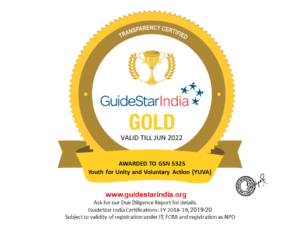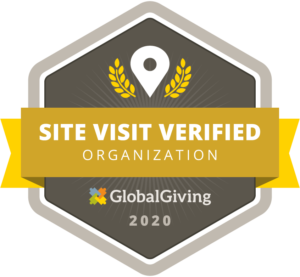Cities are more than just roads and buildings. They are living, breathing spaces shaped by the people who call them home. But how often do we stop to question who really owns the streets, how public resources are used, or whose needs are prioritised in local decisions, and who gets left behind in the name of “development”? And more importantly, what role do we play in shaping the future of our urban spaces?
For 13 young participants, City Caravan 9.0 was a 10-day journey that turned these questions into conversations, debates, and even action. Each day opened up new ways for participants to explore the city and their place within it.
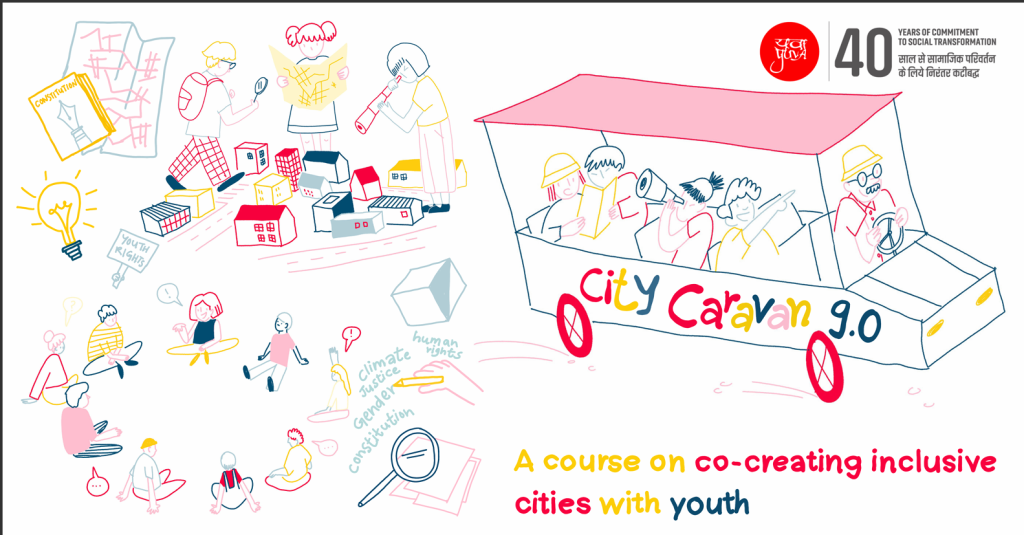
The word “Caravan” reflects movement, exploration, and shared experience, just like the nomadic banjaras who travelled with all their belongings, growing into a community through movement. City Caravan draws from this spirit. It’s a moving classroom, an evolving discussion, and most importantly, a safe space for youth to think critically and speak freely.
Each day of City Caravan 9.0 was thoughtfully designed to help participants engage with complex urban realities, be it housing, governance, gender, and climate change, through group discussions, creative expression, and shared reflection.
A City Reimagined, Through Young Eyes
The city took on new meaning when participants began to view it not just as a place they lived in, but as something they could question, understand, and shape. On day 1, a fun sketching exercise helped them open up, sharing each other’s dreams, struggles, and the many ways the city shaped their lives. Their energy and curiosity grew stronger with each passing day.
One of the early activities, a spider-web exercise, helped participants reflect on how different urban issues are interconnected. Starting with two simple words, “Youth” and “City”, they were asked to share the first words that came to their mind. As each thread was added, the web grew, with words like mental health, unemployment, education, violence, and women’s safety among others. By the end, it was clear how closely these challenges are linked, and how the experiences of young people in the city are shaped by multiple, overlapping realities.
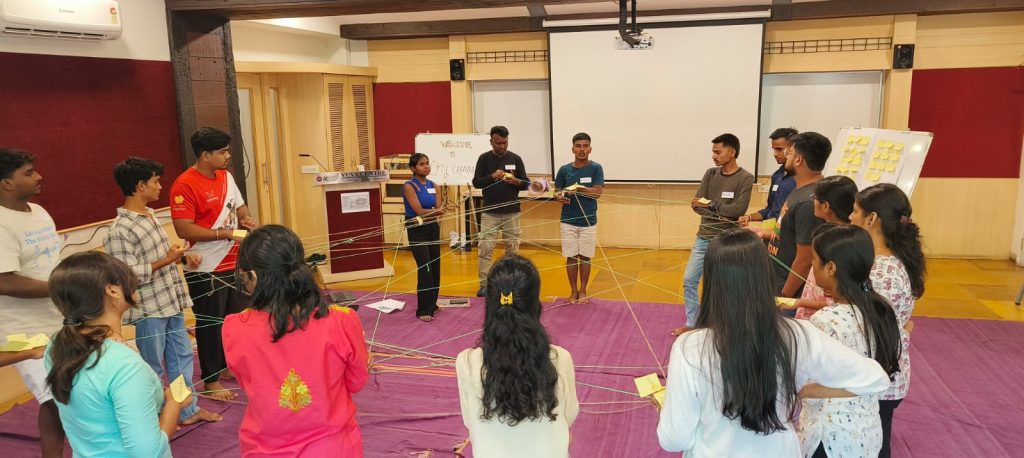
Over the next 2 days, as participants traced their families’ journeys to Mumbai, a quiet realisation came, only a few were originally from the city. Most had roots in places across Uttar Pradesh, Bihar, and other parts of North India, and almost every story shared a common thread: migration in search of work, stability, or a better future.
“We all came from somewhere else,” one participant noted, “maybe that’s why Mumbai feels like it belongs to everyone!”
Through their personal stories, participants began to see the city not just as buildings and roads, but as a space built through people’s daily lives and struggles. The informal settlement rehabilitation session helped them connect their experiences to larger questions of housing and planning. It was a reminder that their voices also matter in how the city grows and changes.
Questioning Power and Unlearning Bias
As the days of the City Caravan passed, participants began to understand that governance isn’t just about people in power, making laws, it’s also about how those decisions affect all of us, and how we, as citizens, have a role in shaping them. One key learning was that government is the structure, but governance is the process, something that includes people’s voices, accountability, and participation.
A conversation around law-making and public accountability brought this to life. “Sometimes, laws are rolled back not just because people oppose them,” one participant said, “but because it reminds us that laws are meant for us and if the people aren’t ready for them, they won’t work.” It was a powerful reminder that in a democracy, “We the people” aren’t just words in the Constitution, we’re active participants in how this country is run.
One moment that stood out was a discussion on how laws can enter deeply personal spaces. Participants debated whether personal relationships and choices, especially between consenting adults, should come under legal scrutiny. “Why do we need permission to love, or to live with someone?” one participant asked. “If it doesn’t harm anyone, why should society decide?” The conversation opened up space to reflect on autonomy, consent, and dignity in private life.
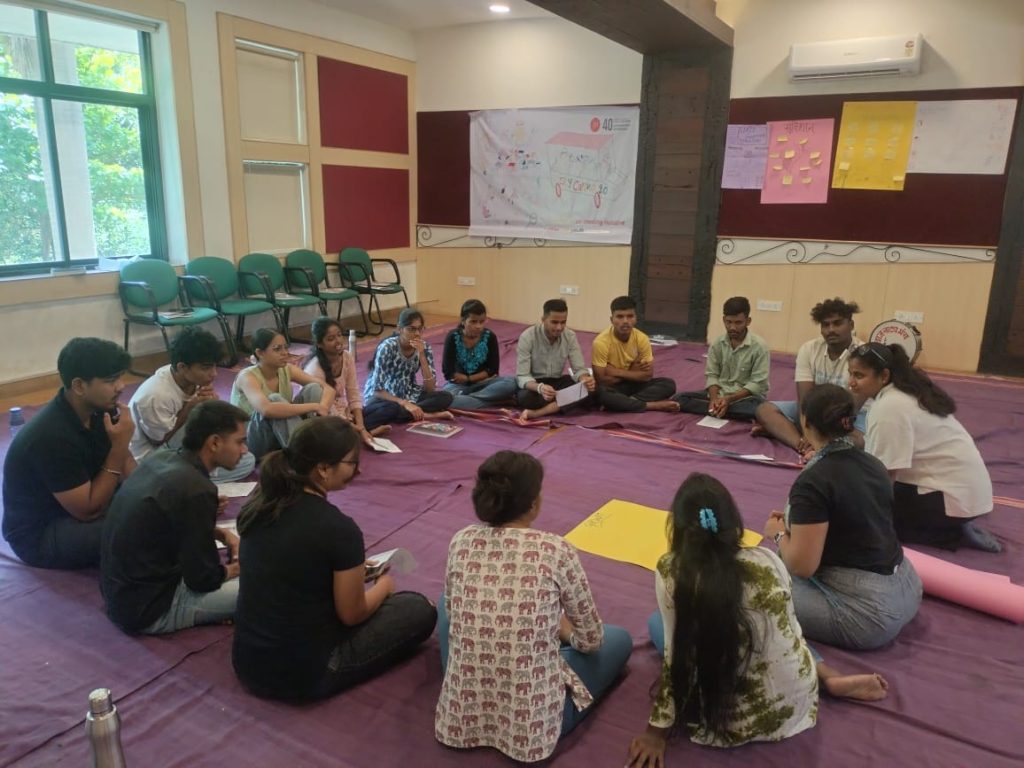
This led into broader reflections on how individual freedoms are often regulated, especially when it comes to queer relationships, interfaith couples, and those who don’t fit into conventional social norms. A round of “Gender Bingo” game helped participants uncover common stereotypes, while a budgeting activity revealed how families often spend more on sons’ education and health than on daughters’.
There was also a group activity that highlighted these biases. Participants were asked to rank a set of fictional individuals and couples based on how “acceptable” they might be to society. As the lists came together, a pattern emerged, socially accepted, upper-caste, heterosexual couples were often placed at the top, while those seen as “different” were often pushed to the bottom. The discomfort was clear. The exercise pointed out important conversations about how societal perceptions are shaped, and who gets to be seen and respected.
Likewise, the session on secularism initiated honest conversations about what it means to live with dignity in a diverse and plural society. Participants reflected on how expressions of faith, especially by minority communities, can sometimes be misunderstood or viewed with suspicion. They spoke about the importance of creating spaces where everyone feels equally safe and respected, regardless of their beliefs. “It’s not just about living together,” one said, “but about feeling secure and accepted in that togetherness.”
These weren’t easy conversations, but they were necessary. For many, it was the first time they could speak openly about how religion, gender, and identity intersect in their lives. And through that, they began to recognise why words like secularism in the constitution aren’t just symbolic, they represent a promise that still needs to be upheld and protected.
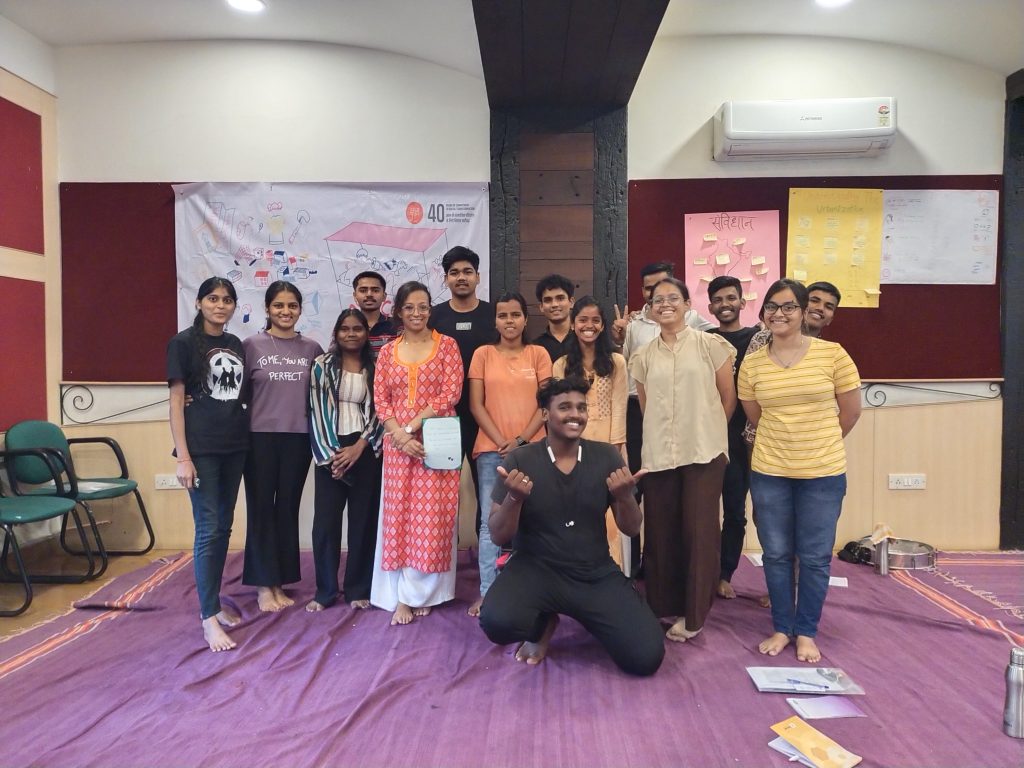
Walking the City, Seeing the Unseen
The City Caravan also included a day dedicated to a city walk, offering an experience beyond the usual classroom learning. When they stepped out, the differences they saw in their city made them pause and reflect. They stood before Mumbai’s huge colonial buildings, hearing stories of how the city was planned and built, but then remembered how, in their own bastis, basic things like clean water, electricity, or a safe public space still remain out of reach.
“I always thought development just meant tall buildings,” said one youth. “Now I see that it can sometimes overlook the needs of people like us.”
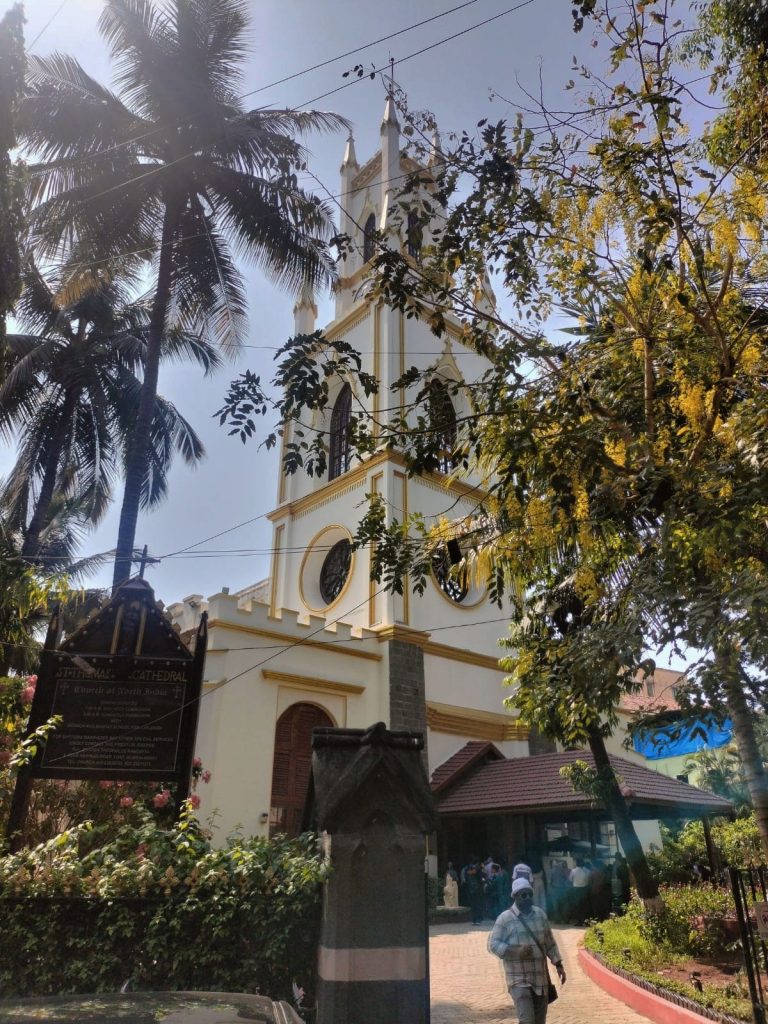
As they mapped their neighbourhoods and shared stories from places like Mankhurd, Vile Parle, and Nalasopara, the bigger picture began to emerge: how communities are marked “illegal” because of land politics, how redevelopment often feels like “displacement”, and how inequality hides in plain sight.
City Caravan gave them a new lens. Mumbai revealed itself as a city of questions, contradictions, and possibilities. And for the first time, many of them felt they had the right to ask: Whose city is this? And who gets to decide what it becomes?
In the final days, participants turned their attention to action and problem-solving. They learned how they can seek information from the government through Right to Information (RTI) applications, use social media and different advocacy tools for changemaking. A session on climate justice sparked discussion on who bears the real cost of development, with many pointing out how Adivasi communities and informal workers are often the most affected.
The journey of City Caravan 9.0 came to an end with a thought-provoking session on street vendors, people who keep cities running, yet face daily harassment and exclusion. Youth created six-month SMART (Specific, Measurable, Achievable, Relevant and Time-bound) plans for their communities, addressing issues from waste management to public toilets to housing rights. They learned to identify which government departments to approach, what tools to use, and how to involve others.
Art and Words: Youths Bringing the Caravan to Life
The City Caravan wasn’t just about facts and frameworks. It was also a space for expression. Youth wrote blogs, created street-style rap songs (Jeava, City Caravan 9.0 Rap song.mp3) and even painted their reflections. One beautiful painting captured the Caravan bus surrounded by youth, where they are involved in open sessions, community bonds, and the power of voice. Each part of their reflections was something they observed, felt, and understood along the way.
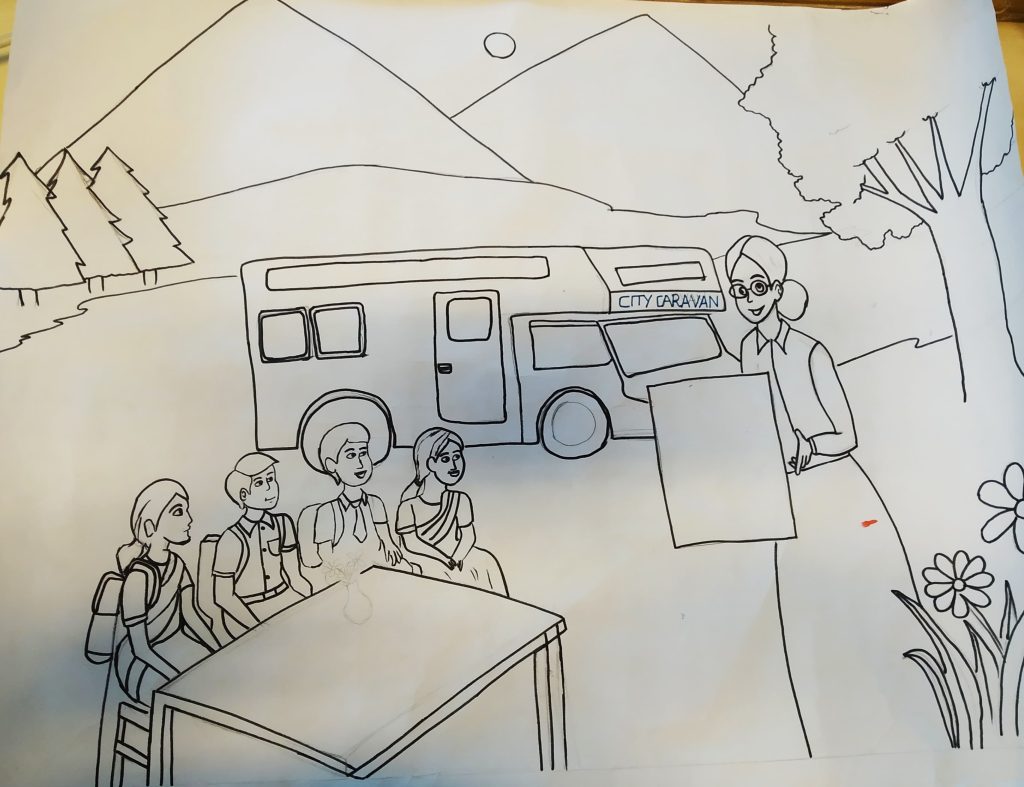
Why City Caravan Matters
In today’s world, when youth are often seen as disconnected, City Caravan showed that they are thoughtful, they have ideas, and are fully capable of leading. City Caravan creates a space for young people to explore, learn, and grow. It builds not just knowledge, but confidence, solidarity, and purpose.
The 10th day wasn’t the end of City Caravan 9.0, it was a starting point. For many, it marked the beginning of a new way of seeing their city and believing they can change it!

